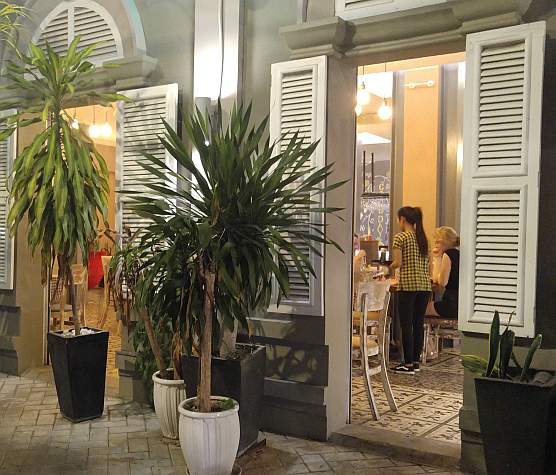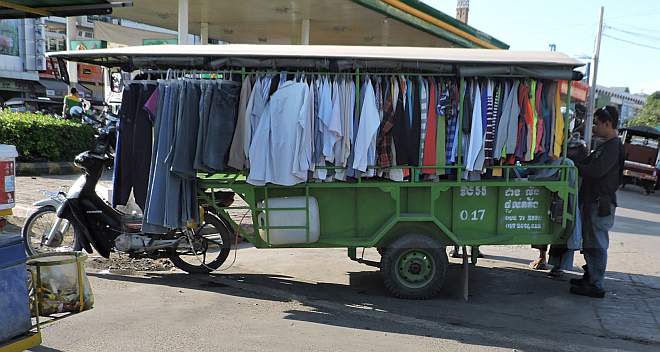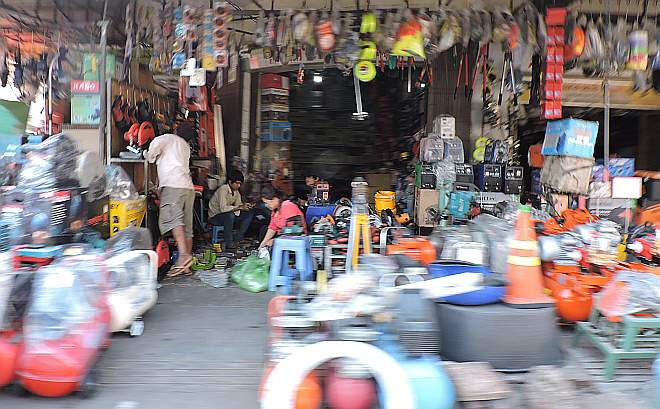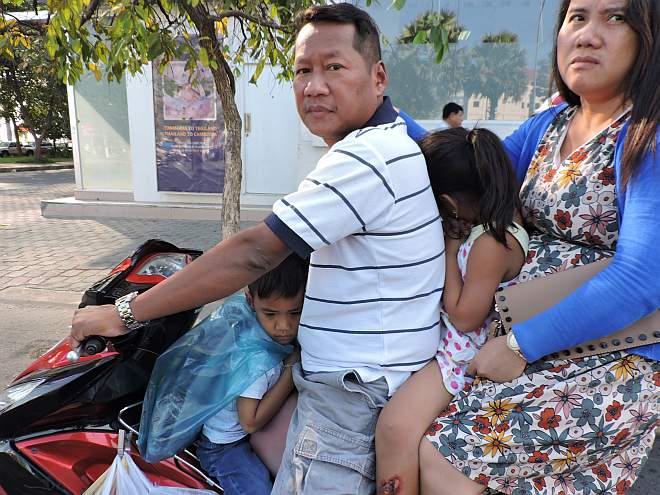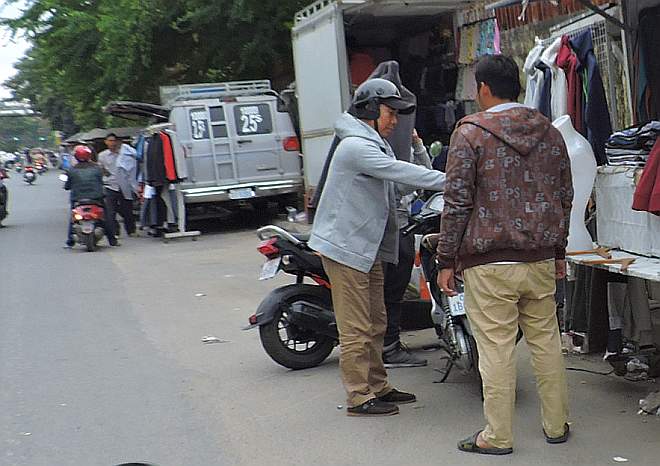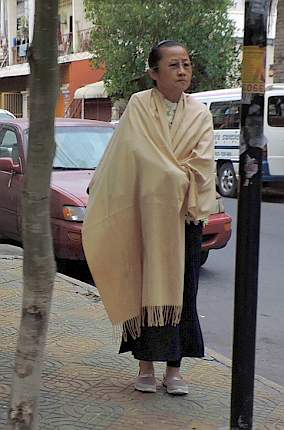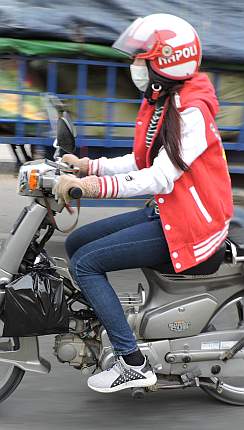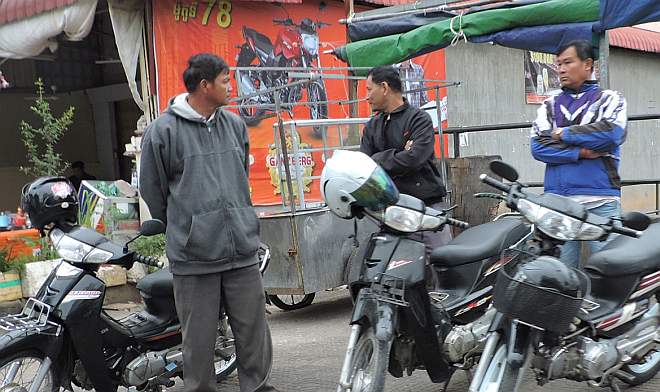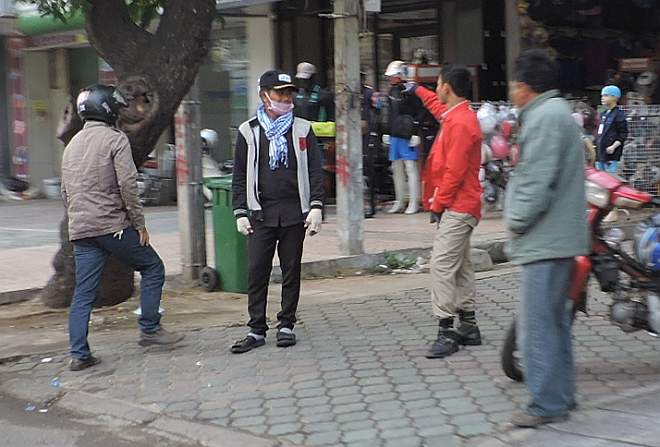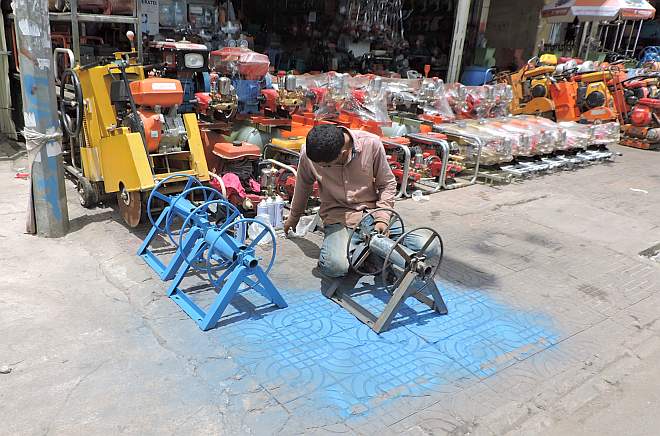
Different cultures certainly have different standards when it comes to appreciating what is right and what is wrong; what is permitted and what is not; what is beautiful and what is not; what is music and what is noise; etc. This man spray painting metal hose reels on a public sidewalk would be arrested in many countries. In Cambodia it doesn’t rate a notice. And if someone challenged the idea, the probable response would be “Floors/sidewalks are SUPPOSED to be dirty/messy/etc.” so what is the problem?
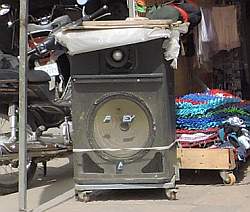
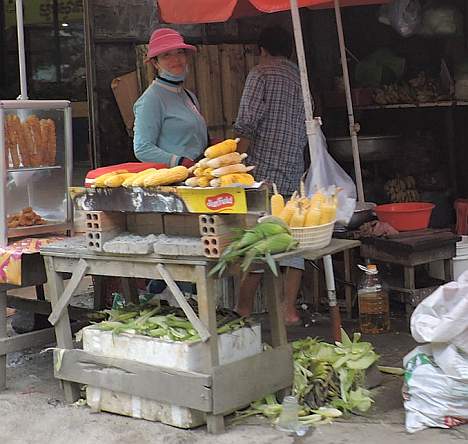
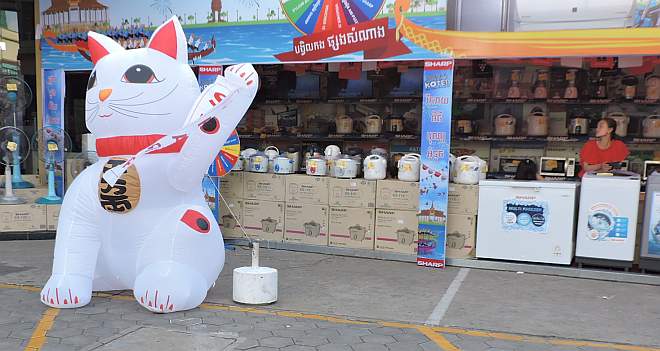
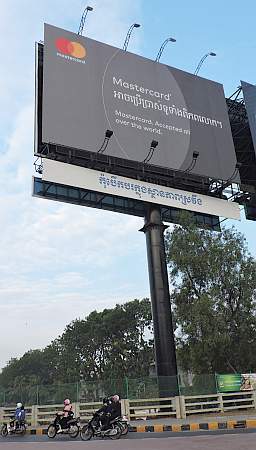 Until very recently a sign like this one would have been unthinkable in Cambodia where credit cards are not very common. Within the last five years or so, there were only one or two high-end hotels that would accept Visa and MasterCard and American Express. And even as a few other establishments began to accept cards, they did so with a 3% to 5% surcharge for their graciousness in allowing you to use your plastic. Today you will see more foreigners using credit cards, but for the most part they seem to be using them to make money withdrawals from their home bank accounts so they can then pay their bills here with cash.
Until very recently a sign like this one would have been unthinkable in Cambodia where credit cards are not very common. Within the last five years or so, there were only one or two high-end hotels that would accept Visa and MasterCard and American Express. And even as a few other establishments began to accept cards, they did so with a 3% to 5% surcharge for their graciousness in allowing you to use your plastic. Today you will see more foreigners using credit cards, but for the most part they seem to be using them to make money withdrawals from their home bank accounts so they can then pay their bills here with cash.